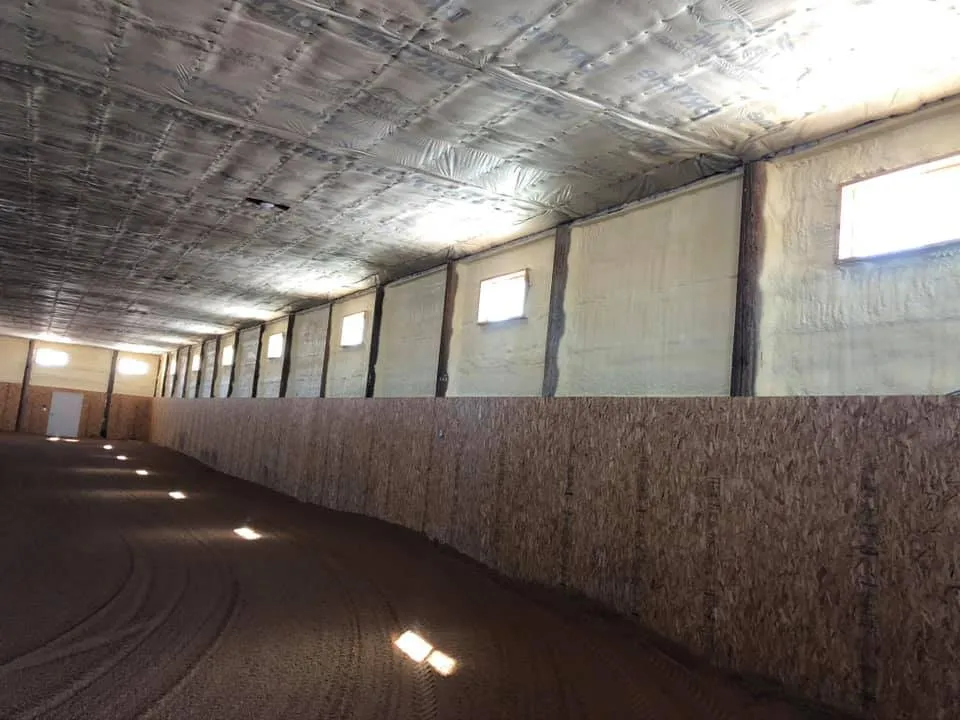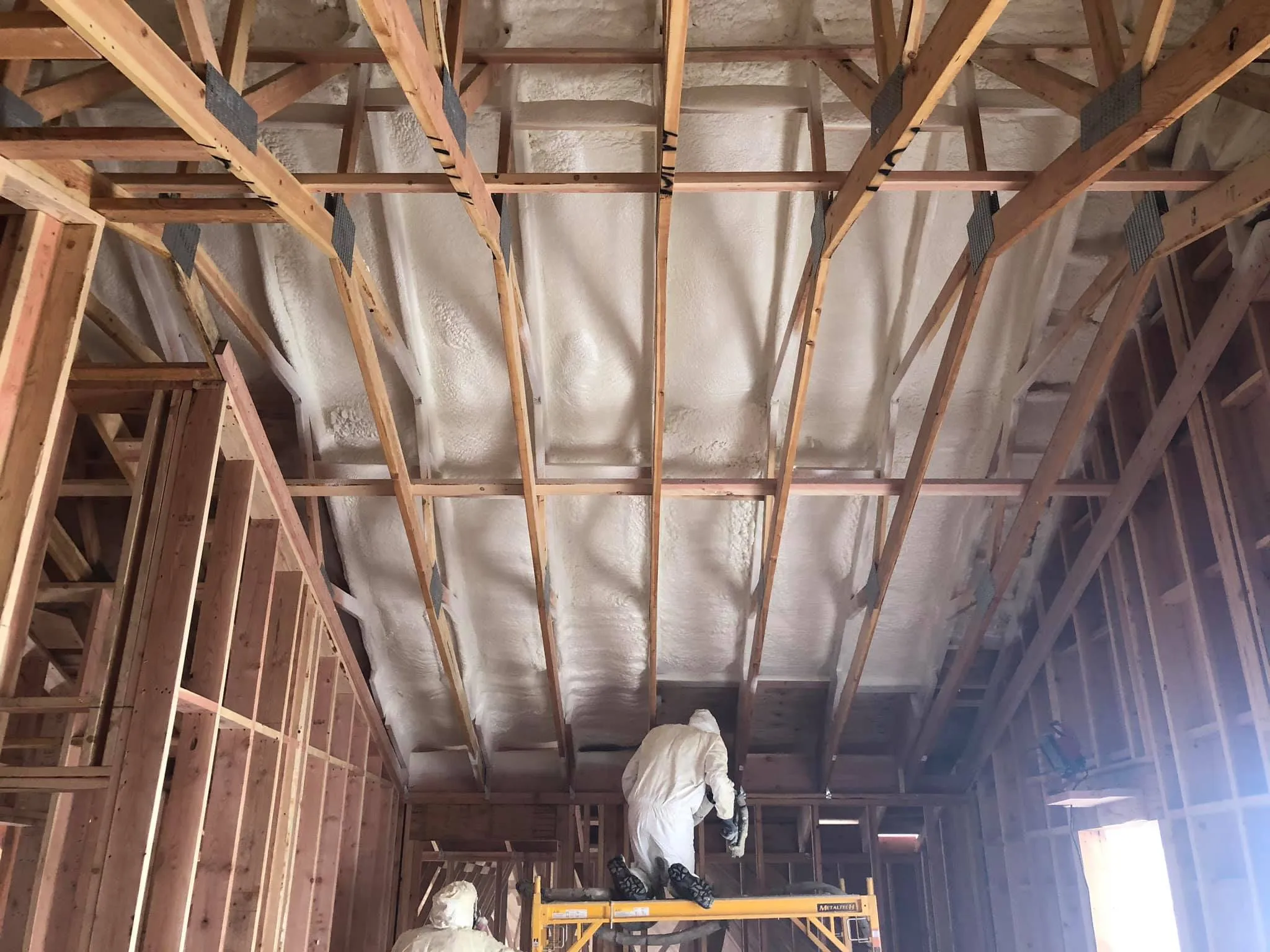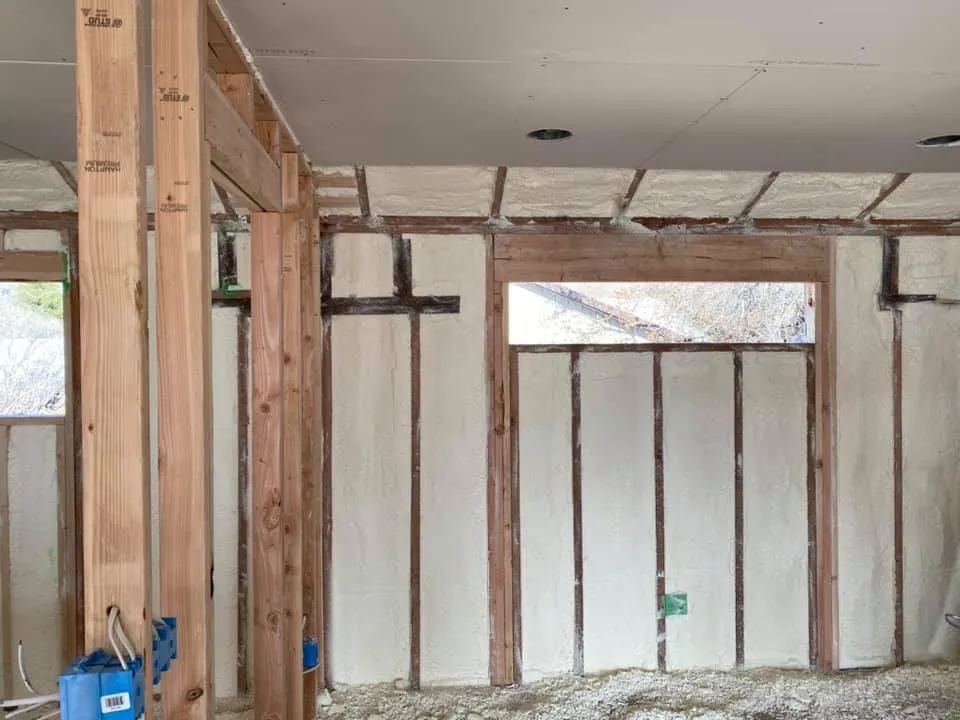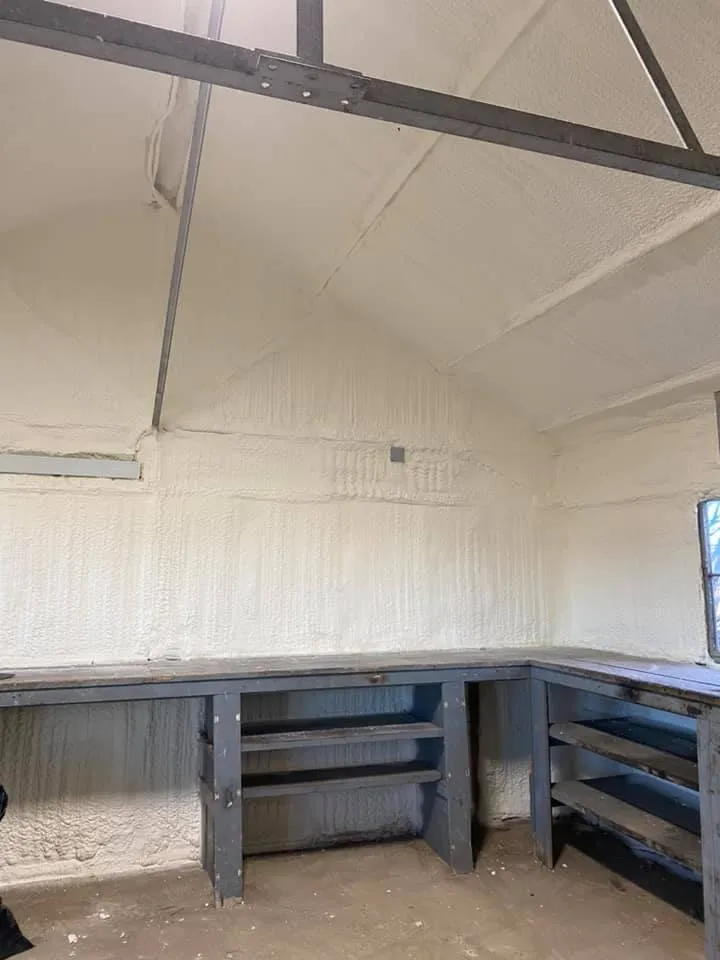

Spray foam insulation can reduce heating bills in Rigby, ID homes by 20-40% annually through superior air sealing and thermal performance. This advanced insulation technology creates an continuous barrier that eliminates air leaks responsible for up to 40% of energy loss in typical homes. The effectiveness depends on proper installation, existing insulation conditions, and home construction details.
Rigby’s climate zone 6B presents unique challenges with winter temperatures dropping to -10°F and heating seasons lasting 6-7 months. Traditional insulation methods often fail to address the air infiltration issues that drive up energy costs in this region. Professional installation expertise ensures maximum performance and validates the investment through measurable energy savings.
Cold climate performance separates spray foam from conventional insulation materials. The seamless application eliminates thermal bridges and air pathways that compromise other insulation types during extreme temperature fluctuations.
| Insulation Type | R-Value per Inch | Air Sealing Properties | Moisture Control | Cold Weather Performance |
|---|---|---|---|---|
| Closed Cell Spray Foam | 6.0-7.0 | Excellent | Superior | Maintains efficiency |
| Open Cell Spray Foam | 3.5-4.0 | Good | Moderate | Consistent performance |
| Fiberglass Batts | 3.1-3.4 | Poor | Limited | Reduces in cold |
| Cellulose | 3.2-3.8 | Fair | Good | Settles over time |
Bonus Tip: Install spray foam during moderate weather conditions (40-85°F) for optimal curing and expansion. Temperature extremes during installation can affect the foam’s cellular structure and long-term performance.
Heating cost reductions vary based on existing conditions and application methods. Homes with inadequate insulation or significant air leakage experience the most dramatic improvements.
According to the Department of Energy’s Building Performance Database, homes in climate zone 6B typically spend $1,200-$2,400 annually on heating. Spray foam applications in similar climates demonstrate consistent energy reductions of 25-35% in the first year following installation.
| Home Size | Existing Insulation | Payback Period |
|---|---|---|
| 1,200-1,500 sq ft | Minimal/Damaged | 8-12 years |
| 1,500-2,000 sq ft | Partial Coverage | 10-14 years |
| 2,000+ sq ft | Adequate but Leaky | 12-16 years |
The International Energy Conservation Code updates for Idaho have increased efficiency requirements, making spray foam installations more cost-effective for meeting compliance standards while maximizing comfort.
Open cell and closed cell spray foam serve different purposes in Rigby’s climate conditions. Understanding these differences ensures appropriate selection for specific applications.
Closed cell foam provides structural reinforcement and moisture barrier properties essential for basement applications and exterior walls facing harsh winter conditions. The higher density material resists freeze-thaw cycles that can damage lesser insulation types.
Open cell foam excels in interior applications where vapor permeability benefits indoor air quality while maintaining thermal performance. The lower density allows for easier installation in tight spaces and provides effective sound dampening.
Bonus Tip: Combine both foam types strategically – closed cell for exterior applications and basements, open cell for interior walls and attics. This approach optimizes performance while managing installation costs effectively.
Rigby’s elevation at 4,865 feet creates additional thermal stress on building envelopes. The combination of cold temperatures and significant elevation requires insulation systems that maintain performance under varying atmospheric pressure conditions.
Winter wind patterns from the northwest increase air infiltration through conventional insulation systems. Spray foam’s adherence to substrate materials creates wind-resistant barriers that maintain effectiveness during severe weather events.
Humidity fluctuations between 30-70% throughout the year demand insulation materials that handle moisture without compromising thermal properties. Properly installed spray foam manages these conditions while preventing condensation issues that plague other insulation types.
Existing home conditions significantly impact spray foam effectiveness and installation requirements. Professional assessment identifies areas where spray foam provides maximum benefit versus situations where alternative approaches prove more practical.
Building age affects installation complexity and expected performance improvements. Homes built before 1980 typically lack adequate air barriers, making spray foam particularly beneficial. Newer construction may require targeted applications rather than comprehensive coverage.
Ventilation system compatibility requires evaluation before spray foam installation. Tightening the building envelope may necessitate mechanical ventilation upgrades to maintain indoor air quality standards.
Access limitations in existing homes can increase installation complexity and associated costs. Retrofit applications often require creative approaches to reach all necessary areas effectively.
High Country Solutions delivers comprehensive insulation solutions designed for Rigby’s challenging climate conditions. The company’s experience with regional building practices ensures installations meet local performance requirements.

Spray foam insulation requires minimal maintenance once properly installed, but periodic inspections ensure continued effectiveness. Visual checks identify any areas where mechanical damage or settling might have occurred.
Performance monitoring through energy bill analysis tracks continued savings and identifies any changes requiring attention. Most professionally installed spray foam systems maintain their effectiveness for decades with proper building envelope management.
Moisture management remains critical for long-term performance. While spray foam resists moisture intrusion, addressing exterior water issues prevents potential problems that could affect any insulation system.
Spring and fall provide optimal conditions for spray foam application while allowing homeowners to address any temporary disruptions before extreme weather seasons.
Most installations require clearing access areas and protecting adjacent surfaces. Professional installers handle necessary preparation as part of the service process.
Open cell foam typically allows reoccupancy within 2–4 hours, while closed cell applications may require 8–12 hours depending on thickness and environmental conditions.
A post-installation inspection identifies any gaps or thin spots requiring attention. Professional installers provide this service to ensure complete coverage and maximum energy savings.
Spray foam insulation offers measurable heating cost reductions for Rigby homeowners when properly applied to suitable applications. The technology’s effectiveness in cold climates and air sealing capabilities address the primary energy loss mechanisms affecting homes in this region.
Evaluation of existing conditions, installation requirements, and long-term performance expectations helps homeowners make informed decisions about insulation upgrades. Professional assessment identifies where spray foam provides maximum benefit and where alternative approaches might prove more practical.
Success depends on proper installation by experienced professionals familiar with regional building practices and climate requirements. Quality installation ensures maximum energy savings and long-term performance that justifies the investment.
Contact High Country Solutions for comprehensive insulation evaluation specific to your Rigby home’s needs and existing conditions. Professional assessment identifies the most effective approaches for reducing heating costs and improving comfort.
Call (307) 248-9063 to schedule a detailed consultation that examines your home’s energy performance and recommends targeted solutions. Email [email protected] for information about insulation options designed for Idaho’s climate challenges.
Payback periods typically range from 8-16 years depending on existing insulation conditions and energy costs. Homes with significant air leakage or minimal existing insulation see faster returns on investment through immediate heating cost reductions.
Spray foam maintains its insulating properties at temperatures well below Rigby’s typical winter lows. The material’s cellular structure remains stable, and its air sealing properties prevent the convective heat loss that reduces other insulation effectiveness in cold weather.
Retrofit installations are possible in most existing homes through access points like basement ceilings, crawl spaces, and wall cavities. Professional assessment determines the most effective approach for each specific situation without requiring extensive renovation work.
Closed cell spray foam resists water absorption and maintains its properties even when exposed to moisture. Open cell foam can absorb moisture but dries completely without permanent damage when the moisture source is addressed.
Spray foam’s air sealing properties provide energy benefits that additional traditional insulation cannot match. While adding fiberglass or cellulose increases R-value, it doesn’t address the air infiltration responsible for significant energy loss in most homes.


